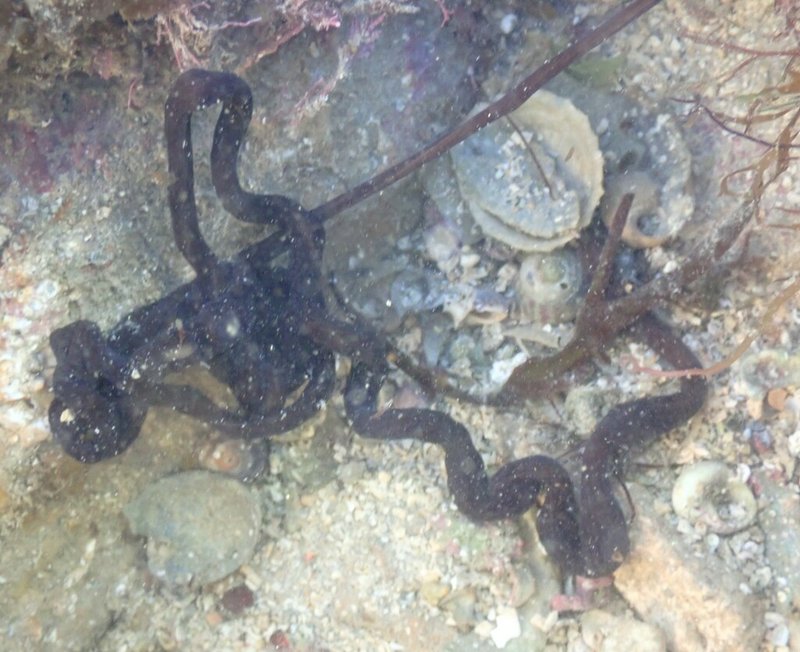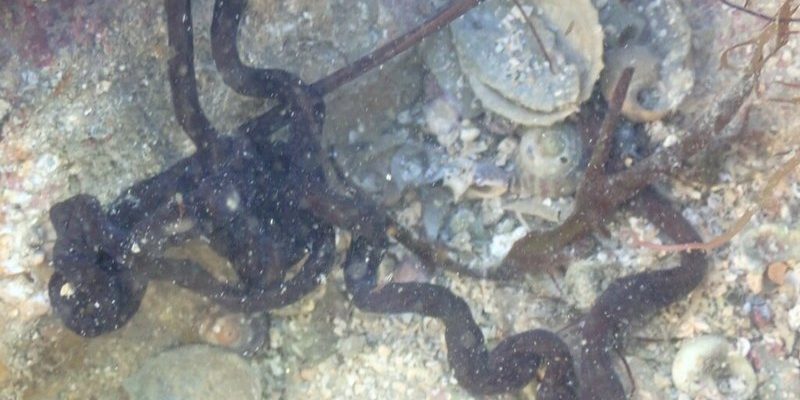
So, how does this remarkable worm manage its impressive hunting strategy? Bootlace worms have evolved a unique way to catch their food that’s both effective and, let’s face it, a bit gross. By secreting a slippery mucus and utilizing potent toxins, they can subdue prey quickly and efficiently, ensuring their survival in the competitive underwater world. Let’s dive into the nitty-gritty of how these incredible hunters pull off their impressive feats.
What Are Bootlace Worms?
Bootlace worms belong to a group of ribbon worms known as nemerteans. If you’re wondering why they get such a quirky name, it’s because, when they move, they can resemble a bootlace slithering across the ocean floor. Their bodies are long, soft, and often brightly colored, which might be surprising for a creature that relies on stealth to hunt.
These worms mostly live in the temperate coastal waters of Europe, but they can also be found in other parts of the world. They thrive in mud, sand, and under rocks, making them good at hiding. Think of them like the ninjas of the ocean, sneaky and adaptable. Bootlace worms are carnivorous, meaning they eat other animals. And yes, their diet includes small fish, crustaceans, and even other worms.
You might be asking, “How do they catch these creatures?” Well, that’s where their hunting methods come into play. These worms use a combination of **mucus** and **toxins** to immobilize their prey before they even realize they’re in danger.
How Bootlace Worms Use Mucus to Hunt
So, let’s talk about that slippery mucus. Bootlace worms secrete a special type of slime that helps them in two ways: it aids in movement and it’s a critical component of their hunting strategy. This mucus can cover a large area and serves as a trap for unsuspecting prey.
When a bootlace worm senses potential food nearby, it produces this mucus in larger quantities. Imagine throwing a big net to catch fish—it’s kind of like that! The slime can stick to small fish or crustaceans, making it hard for them to escape.
Once ensnared, the mucus can also help the bootlace worm to glide over its prey, making it easier to position itself for a strike. This method of hunting is effective because it allows the worm to catch its food without much effort. Rather than chasing down fast-moving fish, the worm simply waits for them to get caught in its sticky web.
The Role of Toxins in Their Hunting Strategy
Now, let’s get to the really interesting part: the toxins. Bootlace worms have a specialized gland that produces a potent venom. Here’s the thing: this isn’t just any venom; it’s designed to immobilize their prey almost instantly.
When their slime traps a fish, the bootlace worm can inject this venom through a proboscis, which is a long, tube-like structure. This venom contains neurotoxins, which means it affects the nervous system of the prey. You might picture this as a kind of “instant paralysis” for the trapped fish, making it easier for the worm to consume it.
The toxins aren’t just for hunting; they also serve as a defense mechanism. If a predator tries to munch on a bootlace worm, it can release some of this venom as a way to deter attackers. It’s like having a built-in security system that works both ways—offensive and defensive!
The Hunting Process: A Step-by-Step Guide
Let’s break down how bootlace worms hunt, step by step. This might make it clearer how these fascinating creatures employ their unique adaptations:
- Sensing prey: The worm uses its sensory structures to detect movement nearby.
- Producing mucus: Once it senses prey, it secretes a large amount of mucus to create a trap.
- Capturing prey: The mucus ensnares unsuspecting fish or other small creatures.
- Injecting toxins: The worm then extends its proboscis to inject venom, immobilizing the prey.
- Feeding: After a few moments, when the prey can no longer resist, the bootlace worm consumes it.
This method may seem simple, but it’s highly effective in the competitive marine ecosystem where they live.
The Importance of Mucus and Toxins for Survival
You might be wondering why these adaptations are so crucial for bootlace worms. Well, in the vast and sometimes harsh world of the ocean, *survival of the fittest* applies in full force. The ability to hunt efficiently is key for these worms, as they need to feed regularly to grow and reproduce.
The combination of **mucus** and **toxins** allows bootlace worms to secure meals without expending too much energy. Instead of chasing fast fish, which could lead to exhaustion or injury, they can lie in wait and use their natural abilities to do the hard work for them.
Moreover, their toxic defenses help keep predators at bay, allowing them to thrive in their environment. This balance of offense and defense makes them a successful predator in their domain.
Fascinating Facts About Bootlace Worms
Aside from their hunting techniques, bootlace worms have some pretty mind-blowing characteristics. Here are a few fun facts that might surprise you:
- Length: Bootlace worms can grow incredibly long, sometimes reaching lengths of over 30 meters!
- Regeneration: If they lose a part of their body, they have an impressive ability to regenerate it.
- Coloration: Their bodies can come in vibrant colors, which helps them blend into their environments and warn potential predators.
- Habitat: They can often be found in tidal pools and beneath rocks, making them adaptable to varying conditions.
These fascinating traits not only make bootlace worms unique but also highlight their adaptability in the ever-changing marine landscape.
Understanding how bootlace worms hunt using **mucus** and **toxins** gives us a glimpse into the incredible creativity of nature. These extraordinary creatures have developed remarkable strategies that allow them to thrive in a complex ecosystem. Their unique methods not only secure their meals but also ensure their survival in the face of various challenges.
Next time you think of these long, slippery worms, remember that there’s more to them than meets the eye. They truly are the unsung heroes of the ocean, showcasing the brilliance of evolution in action. Nature’s quirks never cease to amaze, and bootlace worms are a perfect example of that wonder.

